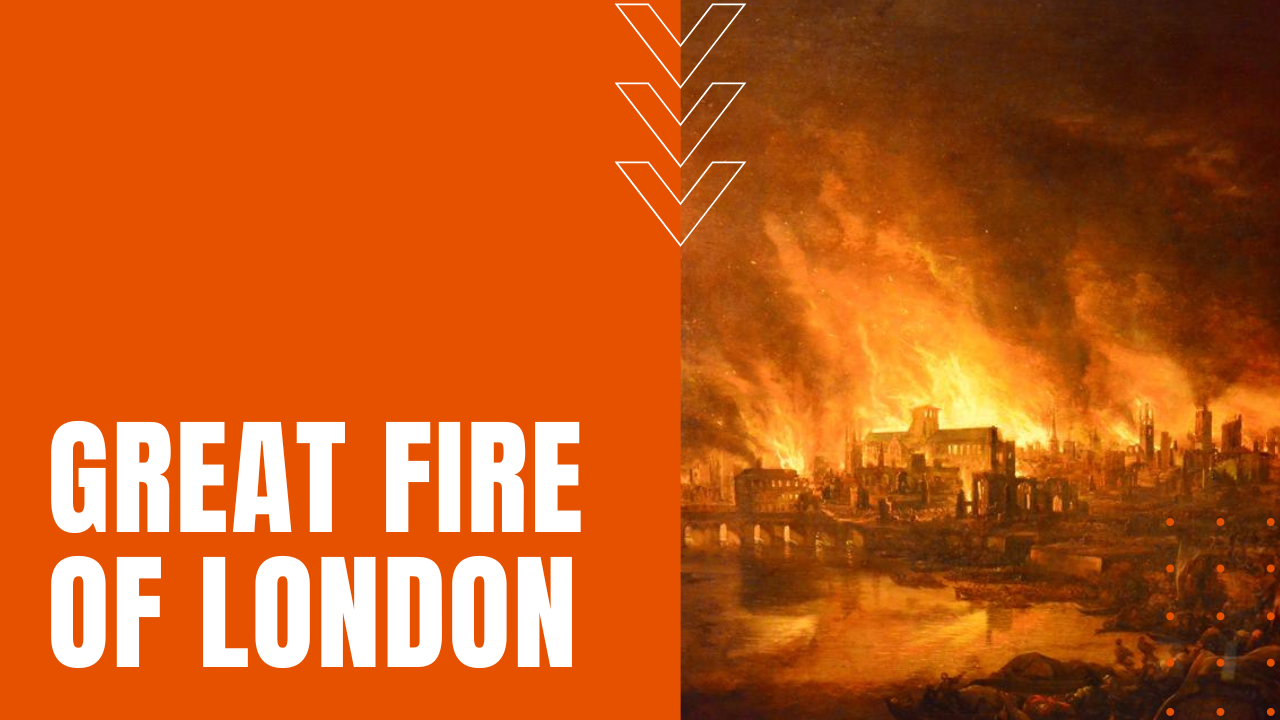Great Fire of London

After two long years of a Bubonic Plague outbreak that took the lives of some 25% of the city’s population, by September of 1666, conditions were rife for disaster, inflicting months of dry weather to a city made up of narrow lanes, packed housing and tinder-dry wooden structures. Beginning on September 1st, when the baker for King Charles II, Thomas Farrinor, went upstairs to bed without properly dousing his oven, shortly after midnight, sparks from his still-smoldering embers ignited aged firewood lying on the floor next to his oven, which quickly engulfed his home in flames.
Fueled by Wind
Helping his family and one servant escape through an upstairs window, his assistant baker died in the blaze—the first victim of the four-day conflagration to come. Fueled by a hot easterly breeze, fire from Farrinor’s bakery quickly leapt across Pudding Lane, setting fire to straw and fodder in the stables of the Star Inn, before spreading onto Thames Street, where riverfront warehouses exploded in flames, igniting flammable material such as lamp oil, alcohol and coal. Locals soon abandoned their attempt at bucket brigade fire abatement, instead rushing home to evacuate their families and save as many valuables as they could.
Failed Fire Breaks
As fire spread throughout the city, authorities struggled to create firebreaks for containment, making futile efforts to tear down buildings before flames pushed them back from their uncompleted task. Many Londoners escaped into the Thames River, while other took to the hills on the outskirts of London, away from a blaze that could be seen from 30 miles away. After the last flames were extinguished on September 6th, Londoners counted the destruction of 13,200 homes, 90 churches and scores of public buildings, destroying four-fifths of London, while displacing an estimated 100,000 people.
Miraculously Low Fatality Rate
Within days, King Charles II set about rebuilding his capital, this time employing brick and stone construction, while separating new townhomes by thick firewalls, at the same time, outlawing narrow alleyways and making streets wider than before. Miraculously, only sixteen Londoners perished in the four-day blaze, making the Great Fire of London, yet another catastrophic moment in the city’s nearly 2000-year history.
